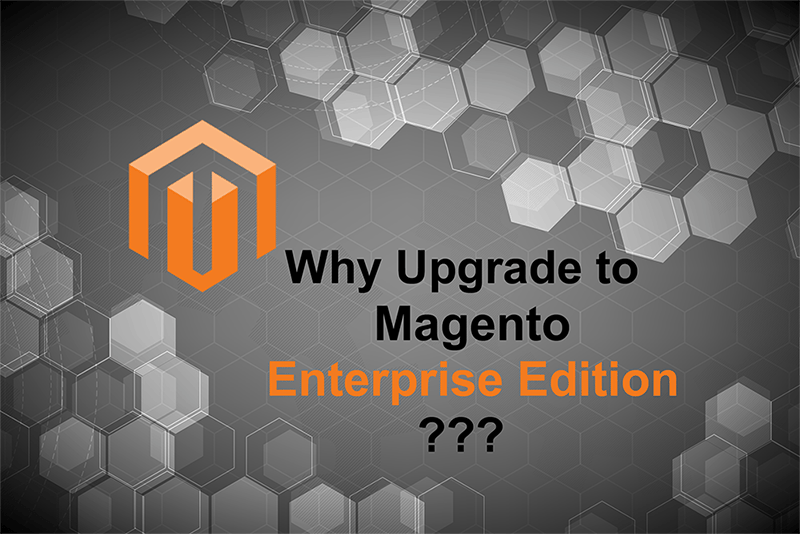
By Brad Leslie, Certified Magento Developer at InteractOne
Upgrading to Magento Enterprise Edition
Most eCommerce shop owners would agree that many of their business decisions are made based on improving the customer experience. From the platform the site is developed on to the features that are added on top. The customer experience reigns on both ends of the spectrum. Magento Community Edition (CE) is a great framework for most small or medium-sized businesses, but larger shops often upgrade to Magento Enterprise Edition (EE). The main reason being: improve the customer experience even more.
Improved Customer Experience
At a glance, EE and CE are very similar. Digging deeper, it’s easy to see that EE is just CE with additional features. Many of which are, unsurprisingly, aimed at improving the customer experience. One of the most beneficial features of EE is ‘customer segmentation’. This allows a shop owner to show the customer a version of the site that is customized for them or their customer segment. Product listing, static blocks, etc can be adjusted to target each individual segment based on a number of attributes.
In addition to manipulating what specific customers see on the site, ‘persistent shopping’ ensures that the customer’s cart, wish list, recently viewed and recently compared history is always available to them regardless of their browser or device. Persistent shopping paired with dynamic, rule-based product relations means that the customer is always seeing: a) products they’ve already showed interest in and b) new products based on relations configured via the admin panel.
Now that the customer is seeing targeted products and banners throughout the site, they are much more likely to add a product to their cart and make a purchase. If they don’t make the purchase, EE’s abandoned cart emails can help secure those conversions. Configurable parameters ensure that these emails are being sent to the customers who are most likely to go back to complete their purchase.
EE has improved performance over CE due to full page caching and optimized indexing. Search results are also improved with the addition of a Solr search module. This allows for more relevant and related search results to be displayed than the default Magento search.
In addition to these features, which really aim to increase conversions, there are many new features for the customer to use directly. Gift registry, gift wrapping / message, reward points, store credit / gift card, multiple wish lists, the ability to add products to the cart by SKU and a configurable order tracking widget are a few.
Streamlined Admin
The rest of the EE-specific features are meant to streamline admin processes and ensure their scalability. Admin logging increases accountability, website/store-specific admin roles restricts administrators to their store exclusively and price/promo permissions can be set so only certain admins can change those values.
The dynamic, rule-based product relations mentioned earlier not only improve the products the customer sees, but they drastically reduce the overhead associated with creating product relations. This is especially true for shops with a large product catalog. The ability to automate which products are cross-sells, up-sells and related saves time and money, but also reduces margin of error.
There are additional Magento Enterprise Edition features designed to improve workflow, including scheduled imports/exports, scheduled backup and rollback, the staging, merging and rollback of content, customer attribute management and more. Order archiving and optimized indexing aim to improve performance when working with large catalog and order collections. The ability to use a CDN or the database for media storage can also improve performance on the front end.
Increased Security
Security has also been increased by using improved encryption and hashing methods. Administrators have the ability to ‘lock down’ the front end as well, via the use of private sales and limited catalog access, based on customer group.
Magento Enterprise Edition is the only Magento version fully supported, meaning that bugs will be patched and a support portal is available should anything come up with a site. There is a cost associated with upgrading from CE to EE, but there are plenty of powerful features that justify the investment. Shop owners who have a large sale volume, product catalog and/or a lot of administrators working with the admin panel should strongly consider upgrading to Magento Enterprise Edition.
If you’re interested in learning more about Magento’s Enterprise Edition or think it’s the right platform you, Contact Us today!
